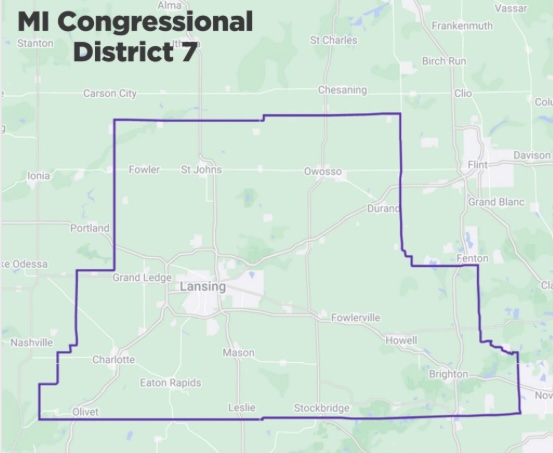What is the Farm Bill 2024 and why should you know about it
It’s a farm bill year! What does that mean for US? Farm Bill 2024: Act Now to Shape Five Years of Farm and Food Policy

Right now, lawmakers are considering which bills will be included in this year’s Farm Bill. NOW IS THE TIME to contact your elected officials and let them know which of these proposals are most important to you and your community and why
 President Obama signed the current Farm Bill at MSU in 2014
President Obama signed the current Farm Bill at MSU in 2014The farm bill is an omnibus law that governs an array of agricultural and food programs for 5 to 7 years. Title VII of the bill authorizes funding for research, extension, and education, including competitive grants and capacity funding awarded by formula, at Land Grant institutions, State Agricultural Experiment Stations, USDA research agencies, and other cooperating research institutions. Title XII is concerned with innovation.
Our elected officials in the house and senate are still tinkering with the details, and President Biden is expected to sign the bill into law September 2024. And here, courtesy of Dr. Molly Sears assistant professor AFRE, is a tidy summary of the parts of the House proposal that may be relevant include:
- Authorizing research programs to address 1) fertilizer use efficiency in crops, 2) plant pests and noxious weeds that impact tropical plants, 3) "the impact of wildfire smoke exposure on specialty crops," 4) the impacts of invasive species of plants and animals such as the spotted lanternfly (Lycorma delicatula), navel orangeworm (Amyelois transitella) and spotted wing drosophila (Drosophila suzukii)," 5) "the agricultural impacts of microplastics and per- and polyfluoroalkyl substances" and 6) specialty crop mechanization and automation research.
- Create centers of excellence around the country to improve research and extension activities addressing a range of challenges impacting food and agriculture production (land grant universities would be eligible to host a center)
- Increasing funding for specialty crop research and R&D related to mechanization and automation in specialty crops
- Make seed that is genetically modified with pesticides exempt from some pesticide regulations
Parts of the Senate proposal that may be relevant include:
- Similar proposal for increased R&D for specialty crop technologies
- Increases the funding for competitive grants to support international agriculture partnerships and grants.
- Authorizes 50 million for regional research corridors for R&D in agricultural technology
- Adds PFAS agricultural effects, peanut aflatoxin, biochar, spotted wing drosophila, spotted lanternfly, wheat resiliency, invasive species, agricultural application of artificial intelligence, aquaculture, white oak, and sunflower breeding as high priority research and extension initiatives.
- Increases financial support for research on wheat diseases
Thank you Dr. Sears for your help with this! And thank everyone for all you do for agricultural science.
Now is the time to make a phone call or send an email to your elected officials. Encourage them to respond to the needs of research and extension in sustainable, resilient agriculture:
Senator Debbie Stabenow https://www.stabenow.senate.gov/contact (MI), Chair Committee on Agriculture, Nutrition, and Forestry
Representative Elissa Slotkin Michigan 7th District, Member, House Committee on Agriculture https://slotkin.house.gov
Here is a sample letter:*
The Honorable Debbie Stabenow
Chair: Senate Agriculture Committee 
The Honorable Elissa Slotkin
Member: House Agriculture Committee
RE: 2024 Farm Bill Research Title VII and Miscellaneous (Title XII)
As a research scientist at Michigan State University, I am concerned with “Research” Title VII : to leverage our nation’s incredible education assets, including land-grant universities, historically black colleges and universities (HBCUs), minority-serving institutions (MSIs), tribal colleges and universities (TCUs), to train the next generation of American food and fuel producers and ultimately, land managers. And to enhance research, education, and extension programs to improve the sustainability and long-term resilience of U.S. agriculture. Targeting agriculture research and innovation will spur productivity growth and generate economic and environmental benefits. To this end, I recommend:
- Bolstering the National Institute of Food and Agriculture’s (NIFA) support to land-grant universities in priority investment areas using an integrative research-education-extension approach toward agricultural supply chain sustainability, including quantification, monitoring, reporting, and verification of greenhouse gas benefits.
- Creating a NIFA pilot partnership program to facilitate expanded Cooperative Extension System engagement with the private sector, including agricultural retailers, cooperatives, seed and feed companies, forest landowners, forestry consultants, procurement foresters, and nonprofits.
-
Designating at least one of the 1890 Centers of Excellence as an institution focused on building sustainable and climate-smart agricultural supply chains. Modifying programs supporting 1994 institutions such as the New Beginnings for Tribal Students Program to incorporate climate, sustainable agriculture, and traditional ecological knowledge.
I am also writing to you about “Miscellaneous” Title XII: Innovation in agriculture is critical to meet the evolving economic and environmental challenges faced by these sectors and is also needed to expand the range of tools available to monitor, quantify, and verify environmental and economic outcomes. Increasing access to precision agriculture technologies enables more efficient management of land, water, fuel, fertilizer, and pesticide resources, driving down costs and lowering emissions. These tools provide the accurate measurements needed to advance predictive models. Data generated by these resources further catalyze greater integrity and transparency in voluntary carbon markets and to reduce the administrative and technical burdens faced by potential participants in federal conservation programs, supply chain sustainability programs, and voluntary carbon markets. I advise:
- Modernizing USDA’s data collection, security, storage, and access. Improving data on conservation practices and farm productivity—including through data review and analysis, technical assistance, and support for precision agriculture data and technology solutions—while also maintaining producer confidentiality.
This is a rare opportunity to improve access to federal government programs and private market opportunities for producers of all types and sizes, while advancing a bipartisan Farm bill that supports America’s farmers, ranchers, forest landowners (and the research that supports them), and their efforts to conserve, and sustain our vital natural resources.
Thank you
[Your constituent]
*edited with permission from https://bipartisanpolicy.org/letter/to-agriculture-committee/



 Print
Print Email
Email




